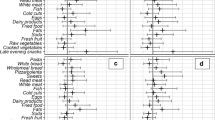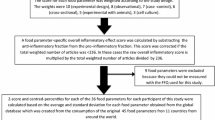Abstract
This paper reports the prevalence of chronic esophagitis and nutritional status among 538 young persons aged 15 to 26 years from the high risk area for esophageal cancer. Of these subjects, 166 were from households with history of esophageal cancer and 372 were from households without history of esophageal cancer. The incidences of chronic esophagitis among male and female adolescents were 37. 6% and 36% respectively, which was significantly higher than those in the low risk area (17%). The frequency of chronic esophagitis in the adolescents in the households with history of esophageal cancer was also higher than in those in the households without history of esophageal cancer. The deficiencies of vitamins, especially of riboflavin and ascorbate, are prevalent and severe among these adolescents. Ascorbate deficiency is correlated with the severity of the chronic esophagitis. These results indicate that chronic esophagitis may be involved in the natural history of esophageal carcinogenesis. Nutrient deficiencies may create an environment favorable to the development of precancerous lesions.
Similar content being viewed by others
References
Yang CS, Newmark HL. The role of micro-nutrient deficiency in carcinogenesis. In: CRC Critical Reviews in Oncology/Hematology, Vol 7. Boca Raton, Florida; CRC Press. 1987; 267.
Munoz N, et al.Proliferative abnormalities of the esophageal epithelium of Chinese populations at high and low risk for esophageal cancer. Int J Cancer 1985; 36:187.
Wahrendorf J, et al. Blood retinol, zinc, and riboflavin status in relation to precancerous lesions of the esophagus; findings from a vitamin intervention trial in PR China. Cancer Res 1988; 48:2280.
Munoz N, et al. No effects of riboflavin, retinol and zinc on prevalence of precancerous lesions of esophageal cancer in Henan Province. Lancet 1985; ii:114.
1990; 12(5):332.
Thurnham DI, Rathakette P. Incubation of NAD(P)H2: glutathione oxidoreductase (EC 1. 6. 4. 2. ) with flavin adenine dinucleotide for maximal stimulation in the measurement of riboflavin status. Br J Nutr 1982; 48:459.
Thurnham DI, et al. Stability of individual carotenoids, retinol, and tocopherol in stored plasma. Clin Chem 1988; 34:1497.
Crespi M, et al. Esophageal lesions in Northern Iran: A premalignant condition? Lancet 1979; ii:217.
Goswami KC, et al. Chronic esophagitis in a population with high prevalence of esophageal carcinoma. Indian J Cancer 1987; 24:232.
Munoz N, et al. Precursor lesions of esophageal cancer in high-risk population in Iran and China. Lancet 1982; i:876.
Yang CS, et al. Vitamin A and other deficiencies in Linxian, a high esophageal cancer incidence area in northern China. JNCI 1984; 73:1449.
1990; 12(2):218.
Author information
Authors and Affiliations
Rights and permissions
About this article
Cite this article
Wang, L., Guo, H., Qiu, S. et al. Studies on nutrition and precancerous lesions of the esophagus in the adolescents. Chin J Cancer Res 4, 69–75 (1992). https://doi.org/10.1007/BF02996406
Issue Date:
DOI: https://doi.org/10.1007/BF02996406




